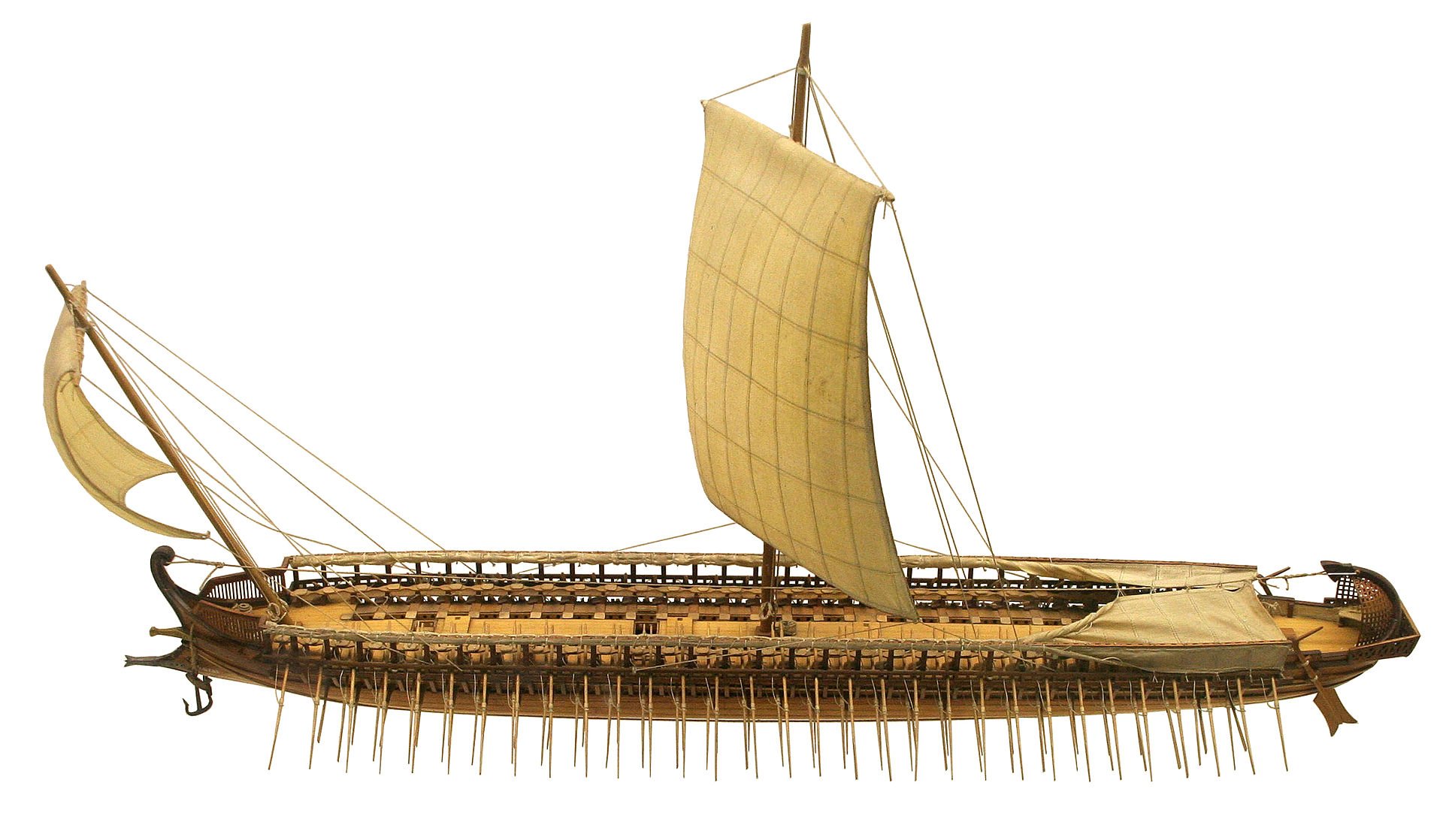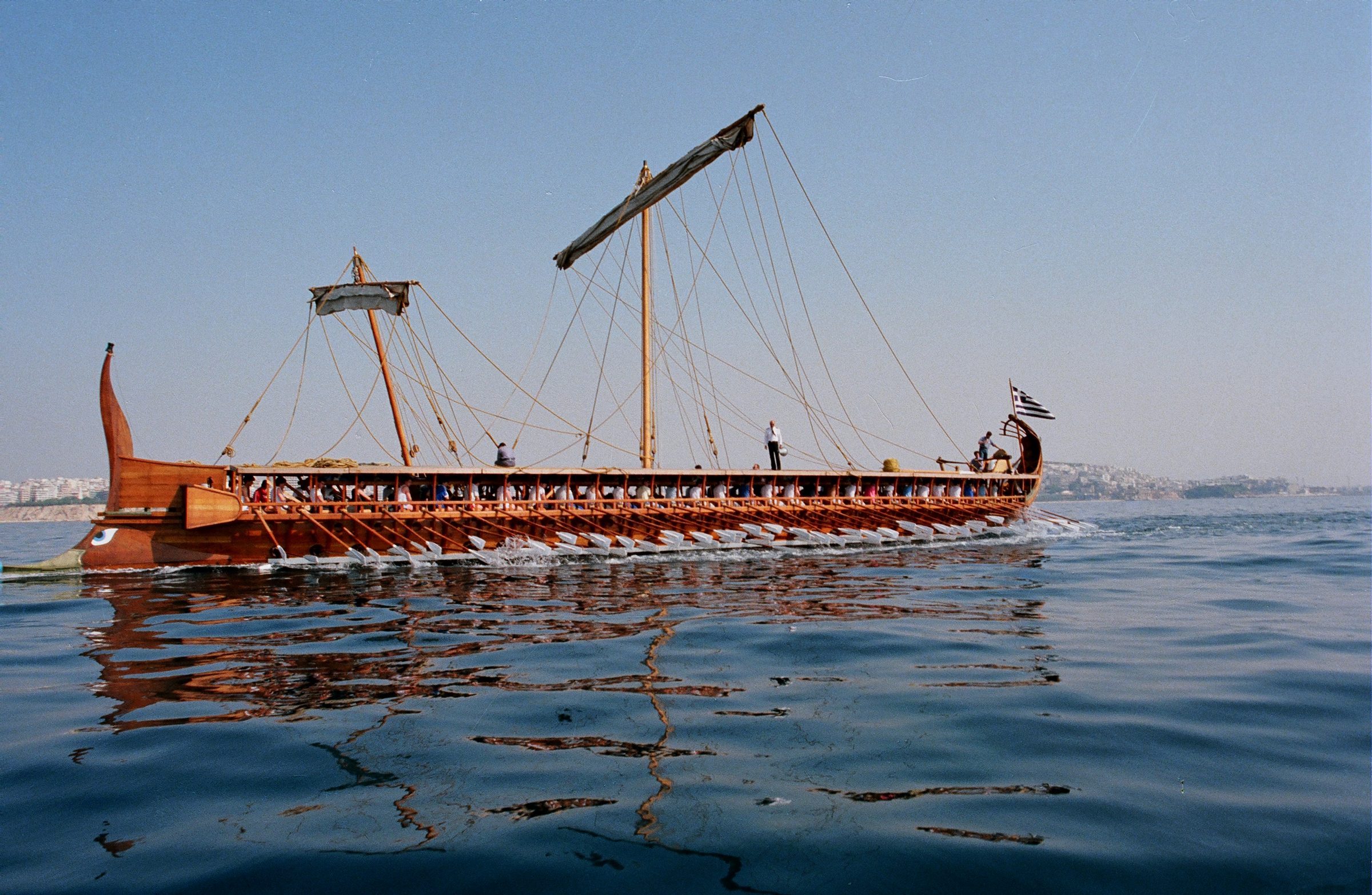
When the ancient Greeks faced the Persian navy in the Battle of Artemisium, they set the tone for the Battle of Salamis that drove the Persians out of Greece.
The significant naval battle at Cape Artemisium in 480 BC was overshadowed by the simultaneous heroic Battle of Thermopylae, yet it was equally important for the Greco-Persian War and the future of ancient Greece.
The newly established Greek naval force was to support the land battle at Thermopylae. At the same time, the Persian navy was invading Greece by sea.
The legendary stance of Leonidas and his three hundred brave men—who fell in Thermopylae while facing the massive army of King Xerxes—along with the Battle of Artemisium raised the morale of the ancient Greeks, who formed a united front, leading to the destruction of the Persian navy in Salamis a year later.
Battle Preparations
The first Persian invasion of Greece began in 492 BC under King Darius the Great. It ended with the decisive Athenian victory at the Battle of Marathon in 490 BC. Following the first invasion, several Greek city-states agreed to set aside their differences and form an alliance. In the pivotal Congress of Corinth in 481 BC, they united against Persia.
King Xerxes, the son of Darius, ascended to the throne when his father died in 486 BC. He took it as his duty to continue his father’s mission to subjugate Greece. In 480 BC, the vast Persian army, led by King Xerxes, crossed the Hellespont and moved south to Greece.
Themistocles, the Athenian statesman and general, proposed the pass at Thermopylae as a viable option for blocking the progression of the Persian army. The pass was bordered to the south by steep mountain cliffs and to the north by a sloping beach. The shoreline was of particular importance, as it opened the Greeks up to being outflanked by the Persians who could land men on the beach.
Thus, to successfully block the Persians at Thermopylae, the Greek navy had to block the Strait of Artemisium. King Leonidas of Sparta, who was leading seven thousand Greeks, moved to block the pass at Thermopylae. Themistocles ordered the evacuation of Athens and sailed the Greek fleet to the northern point of Euboea at Cape Artemisium.
The Two Fleets
According to Greek historian Herodotus, the Persian fleet totaled 1,207 ships when they crossed the Hellespont. However, luckily for the Greeks, a huge storm that lasted for two days dashed the ships against the rocks, destroying about one third of them.
The historian also claims the Persians sent out two hundred ships around Euboea to block the southern entrance of the Euboean Gulf so as to deny the Greeks an escape route. This would leave around six hundred ships to take on the Greek fleet.
It is unclear how many Greek ships there were. According to Herodotus, there was a total of two hundred and eighty vessels with sixty of them arriving on the second day of the Battle of Artemisium.

The Athenians contributed the bulk of the fleet with a hundred and twenty-seven ships. The Corinthians supplied forty of them. Despite only contributing ten vessels, the Spartans had overall command of the fleet. While Themistocles was respected for his battle acumen, command of the fleet was handed over to the Spartan, Eurybiades, in order to preserve Greek unity.
The Persian fleet was drawn from various regions within the Persian Empire, including Phoenicia, Syria, Egypt, Cyprus, Cilicia, Ionia, and Pontus. The Greek ships carried a little over four thousand marines, while the Persians had more than thirty-six thousand. Counting the skilled, professional oarsmen, the Greeks were around forty-six thousand, while the Persians totaled approximately two hundred thousand.
As the Persian fleet was seen approaching Artemisium, a huge storm that lasted for two days sent the ships smashing against the rocks. Approximately one-third of the Persian fleet was lost in the storm. After the winds had died down, the Greeks sailed north to meet the enemy.
Battle at Artemisium
The Persians, despite their sizeable losses to the storm, believed they would manage a quick victory. They had three times as many ships as the Greeks, and their crews were more experienced than the newly-built naval powers of the Greeks.
The formation employed by the Greeks for battle is a topic of debate, but the modern consensus is that they used a crescent formation to protect the flanks and negate the Persian tactic of diekplous.
Diekplous was a maneuver in which ships would sail directly between the enemy ships and then swing around to ram the enemy vessel on the stern. The Greek ships moved forward and attacked the Persians. The Greeks managed to capture or sink thirty Persian vessels. Then night fell, and the battle stopped to resume the next day.
On the second day, the Persian navy was still recovering from the storm, so they did not attack. The Greeks waited, uncertain of what the Persians had in mind, but luck was once again on the side of the Greek navy. While they waited to assess the Persians’ stance, fifty-three triremes with reinforcements arrived from Athens. In the afternoon, they caught and destroyed a few Cilician vessels while on patrol.
Third Day and Withdrawal
On the third and final day of the Battle of Artemisium, the Persians attacked the Greek navy. The allied forces tried to block the straits, but their ships were too few. The Persians attempted to envelop them, and the Greeks advanced to engage. After fierce fighting, both sides suffered immense casualties, losing roughly the same number of ships.
At the end of the day, the fighting came to an end, and both fleets assessed their situation. The Greeks inflicted heavy casualties on the Persians, but they had lost too many ships as well. When they received news that the Greek rearguard at Thermopylae had been annihilated, the allied fleet withdrew from Artemisium, as there was no reason to hold it.
The Greeks had lost the battle at Thermopylae, and the fleet withdrew from Artemisium. Yet, the newly-established allied navy earned valuable experience that would be invaluable in the Battle of Salamis that was to follow. Furthermore, with the help of the storm, the Persians lost around four hundred vessels, while the Greeks only lost a hundred.
More importantly, however, the battles at Thermopylae and Artemisium allowed the allied Greeks another opportunity to fight the Persians, and they did so victoriously in the Battle of Salamis.